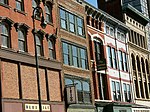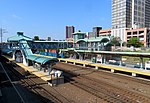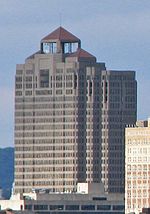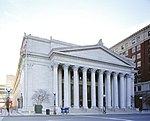360 State Street
Apartment buildings in ConnecticutBuildings and structures in New Haven, ConnecticutLeadership in Energy and Environmental Design platinum certified buildingsModernist architecture in ConnecticutResidential buildings completed in 2008 ... and 2 more
Residential skyscrapers in ConnecticutSkyscrapers in New Haven, Connecticut

360 State Street is a 300-foot (91 m) residential skyscraper completed in 2010 in New Haven, Connecticut. It is the second-tallest building in the city, and the largest apartment building in the state. DeSimone Consulting Engineers were the structural engineers on the building and it won the 2009 New York Construction – Top Project of the Year.
Excerpt from the Wikipedia article 360 State Street (License: CC BY-SA 3.0, Authors, Images).360 State Street
Court Street, New Haven
Geographical coordinates (GPS) Address Nearby Places Show on map
Geographical coordinates (GPS)
| Latitude | Longitude |
|---|---|
| N 41.3047 ° | E -72.923 ° |
Address
Ninth Square Historic District
Court Street
06511 New Haven
Connecticut, United States
Open on Google Maps








